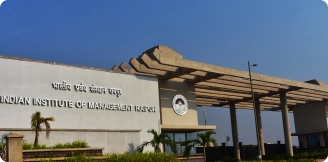Ensuring the highest quality standards is the most important thing when dealing with goods and services. Operational efficiency refers to companies being able to provide their customers with high-quality products at cost-effective rates with no or minimal inconvenience.
Companies resort to various methods and techniques for achieving quality standards and maintaining operational excellence. With an insightful CEO course, one can learn how operational excellence within an organisation can be achieved while ensuring that they abide by the relevant quality standards for their products.
In this blog, we will discuss the importance of operational excellence and the various quality management techniques that allow companies to achieve the highest quality standards for their products and services.
What is Operational Excellence?
Operational excellence is a concept within an organisation where all the employees can thoroughly examine the flow of values to the consumers and ensure the flow is on track and fix it in case of any breakdown or inconvenience. An organisation is said to be operationally excellent when every employee is aware of their respective contribution to the flow of values to the consumers. They possess the ability to determine whether the flow is normal or abnormal and are capable of rectifying any deviation without the aid of the management.
The voluntarily accountable personality of each employee allows executives of operationally excellent companies to refocus their concentration from handling daily duties to continuous innovation and various other endeavours that focus on enhancing recurring earnings. An executive with a certificate course in management will be better able to understand the intricacies of operational excellence when compared to the other contemporaries.
Quality Management Techniques: Meaning
Planning and controlling the activities of the organisation are the two main components of quality management techniques. This approach helps to guarantee that the product or service is suitable for the purpose for which it was designed. The reputation of a company is demonstrated by the standards of its goods and services which is also very important for attracting potential clients.
When it comes to quality standards, there exist certain benchmarks that an organisation sets for themselves. Hence, the products and services are designed based on the relevant quality standards that have been set by the organisation itself. However, the quality parameters may vary depending upon one company to another.
Quality Management Techniques for Achieving Operational Excellence
There are multiple quality management techniques that are applied in various industries. The parameters may differ depending on the type of organisation, the type of goods and services they deal with and various other factors. Effective CEO training programs may assist professionals in gaining a deeper understanding of the various quality management techniques.
Some of the major quality management techniques are enumerated as follows:
- Total Quality Management: TQM is one of the oldest techniques of quality management. In this technique, each and every step of the manufacturing process is closely observed and the team ensures that the manufacturing of products is done as per the quality standards. It is a cost-effective technique and is equally easy to implement. This technique helps to increase organisational productivity and prioritises optimal usage of resources.
- Baldrige excellence framework: This framework acts as a road map for organisations so that they can assess and plan how product quality can be improved. Baldrige's framework allows professionals to locate the faulty areas and take improvement actions.
- Six Sigma: The Six Sigma rule of quality management standards is mostly used in electrical and mechanical industries. The objective of this technique is to improve the overall quality of the product by eliminating any imperfection that may trigger it to fall short. To understand this quality technique, professionals need to have a basic understanding of the value of sigma as the entire concept is based on this.
- Top-down and bottom-up techniques: This is a new-age and efficient approach that has been adopted by many industries. In this technique, orders within the organisation flow from the higher level officials to the lower level and similarly, the information flows from the lower level officials to the top level. As per the top-down approach, the top management calls for a report from the lower level about the quality and operational measures. On the contrary, as per the bottom-up technique, information about the quality standards followed by the workers is passed from the lower hierarchy to the top level.
- ISO: The International Organization for Standardization is an autonomous body that provides quality assurance standards for various goods and services. Every company in the goods and services industry has to apply for an ISO certification. Every quality product has an iso tag which acts as product quality assurance.
- Cost of quality: This technique measures the difference between the cost of production including sales, manufacturing, and other miscellaneous expenses and the costs experienced during production without any errors. The goal of this technique is to make the product cost-effective and error-free. It is a customer-centric technique and the product manager thrives to improve the quality of the product by maintaining the cost of production. It is a very recent concept and highly skilled professionals are required to prepare the accounts and charts.
- Kaizen: It is an old Japanese technique which is increasingly used to maintain product quality. The idea behind this technique is to check product quality at every stage of production. The lower hierarchy is given all the liberty to maintain product quality as they are the ones who work on the primary level. The top hierarchy provides all the amenities to the workers so that they can choose the best resource and avoid a drop in quality.
Industries Using Operational Excellence
Many businesses and industries have benefited from operational excellence. Some of the industries that use quality management techniques for operational excellence are stated as follows:
- Most manufacturing industries mainly use mean management techniques to enhance their workflow.
- Marketing agencies use operational excellence to understand the target audience and launch campaigns accordingly.
- Healthcare centres increasingly rely upon operational excellence to enhance consumer experience and evaluate patient results without any hindrance.
- Various financial institutions and banking sectors employ operational excellence to detect fraud and develop flawless banking processes.
- Agile and scrum techniques are used in the field of Information Technology to ensure that employees can perform according to the changing requirements of the industry.
Conclusion
Operational excellence and quality management techniques are two closely related and integral parts of a business even if it is at the inception stage. Companies should not overlook the importance of these concepts. Generally, companies appoint a CEO who takes care of all these aspects at the topmost level.
You may sign up for a Chief Executive Officer course which will help you to transition into a leadership role and understand the key concepts of operational excellence and quality management techniques. If you are looking to become a strategic master in this role, you may consider registering for the Executive Certificate Programme For
Strategic Chief Executive Officers, IIM Raipur by Imarticus. Enhance your skill set and uplift your professional journey with Imarticus Learning.








